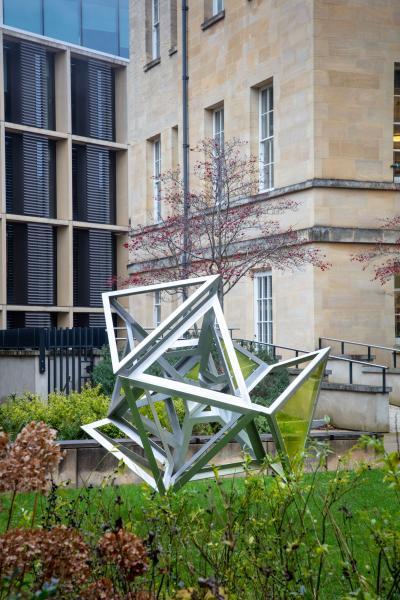Discovering Oxford’s appeal
The institute seems a fitting location for an artist whose work has always crossed multiple disciplines, and who loved Oxford for the breadth of opportunities it provided — even if he was initially unsure whether the city would be able to fuel his creative ambitions.
“I had a typical 18-year-old attitude,” admits Conrad who, in 2016, would go on to become the youngest living artist to be elected to the Royal Academy aged 36. “I was worried that Oxford wasn’t the capital and that the Ruskin wasn’t Central St Martin’s and that I needed to be in London to be a really important artist. But then I arrived and the first term was revelatory. I completely forgot all that prejudice and snobbery and had the most incredible time.”
Students at the Ruskin School of Art are embedded in colleges across Oxford. While Conrad lived, dined and socialised at LMH, he studied on the Bullingdon Road and had more opportunities than many students to build links with other colleges. “I think the Ruskin has got a really interesting, unique and slightly uneasy position,” Conrad says, “because it’s slightly out of the mould of other subjects that exist in a more traditional framework. Its artists are spread across the University and they tend to be these idiosyncratic people who learn to question things and not necessarily answer things. It also meant that by the end of the first term I’d gone to almost every college in the city, which wasn’t the case for many students at LMH.
“And I loved the fact my work was and continues to be very influenced by being surrounded by all these other subjects,” he continues. “My friends weren’t only artists from the Ruskin. I was hanging out with poets and writers and scientists, and going to lectures in those subjects was encouraged and considered very important. It wasn’t an art school that was just about making art or making in-jokes about art history. You were surrounded by the history of ideas.”
(Photo: Paradigm Chamfer (Structural), 2015)



